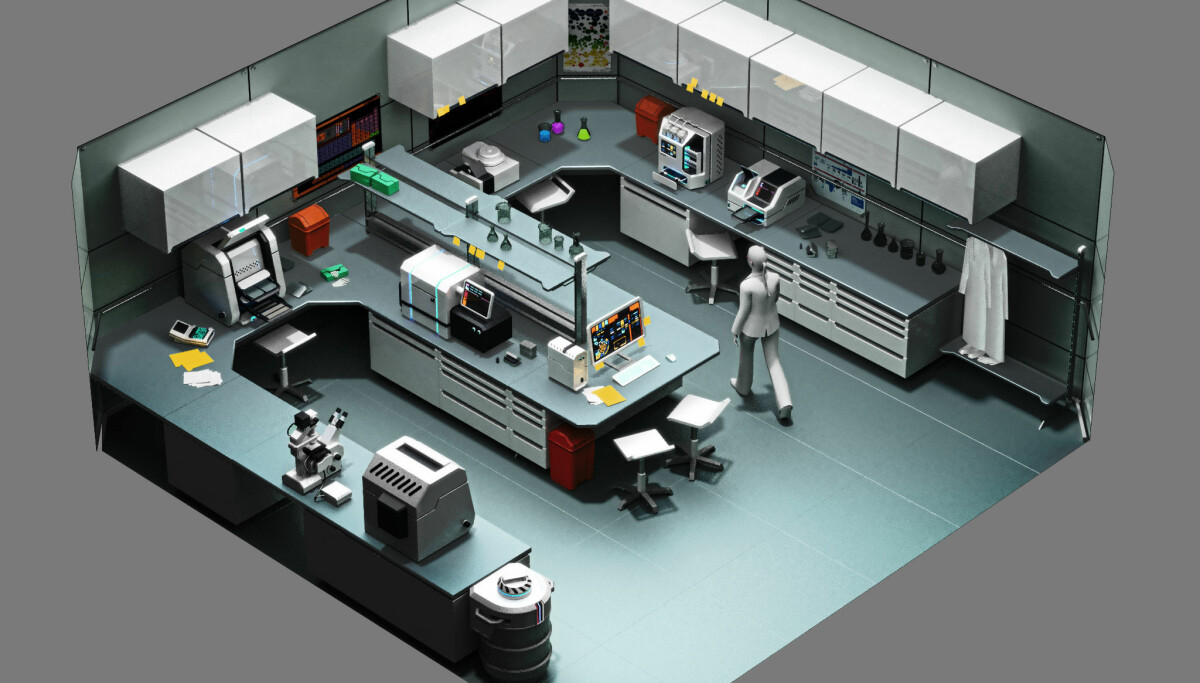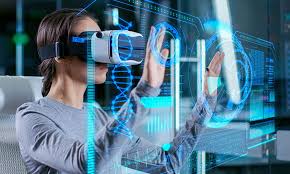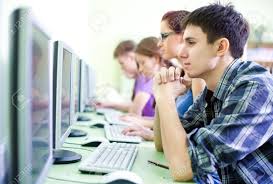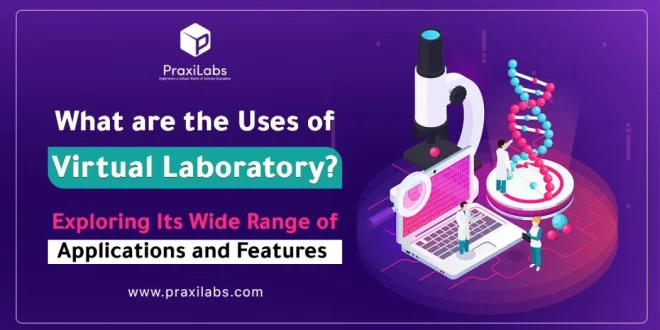Last Updated on August 22, 2025 by Muhamed Elmesery
Just imagine that you can conduct hard experiments remotely from your own home or classroom, without feeling pressured and no need to go to the real lab or provide expensive materials and equipment. Thanks to technological development, this is now possible through the technology of virtual laboratories.
In this article, we will discover the world of virtual laboratories and know more about “What are the uses of Virtual Laboratory?” focusing on the several uses and benefits they offer, We will discuss how virtual laboratories can be used to improve student performance, the importance of virtual laboratories, and the challenges that they face.
Join us as we uncover the exciting opportunities that Virtual Laboratories bring to education and science teaching.
Table of Contents
What is Virtual Laboratory?
Virtual laboratory simulation now is one of the most important and widely spread e-learning techniques. It is considered as 3D immersive simulation in science that enables students to conduct science experiments online, from their personal devices anytime and anywhere.
Virtual laboratories are used to enable both teachers and students to achieve the educational goals they want by facilitating the application of the practical side of the curriculum, teaching the different scientific principles and techniques, and clarifying the experiment steps.

What are the Uses of Virtual Laboratory?
Virtual labs have a wide range of uses and benefits in many fields such as science laboratories\ medicine\ education\ air fighting simulations\ data visualization\treating mental illnesses\ gaming and more.
Educational Purposes
One of the most important and big uses of virtual laboratory is education. It helps educators and students to conduct experiments easily and increase their practical knowledge by using 3D interactive and immersive simulations that simulate the real science laboratory. Virtual laboratory covers a wide range of topics in the field of chemistry, physics and biology. Virtual laboratories ensure the safety of students while exploring scientific concepts, doing virtual experiments, and making observations.
Cost-Effective Alternative:
The big importance of a virtual laboratory is the cost reduction alternative by eliminating the need for materials, tools, equipment and other physical resources that require high costs. Educational institutions can access a wide variety of scientific of 3d virtual simulations without the financial burden of purchasing and maintaining lab equipment.
Accessibility and Flexibility:
Virtual Laboratory provides accessibility to students and educators who may not have access to traditional laboratories due to various causes such as distance learning or unavailable physical resources, virtual labs are considered the perfect solution as they can be accessed from anywhere and anytime to allow learners to conduct experiments at their own pace.
Risk-Free Environment:
In real laboratories in colleges and universities, dangerous experiments are often canceled and only studied theoretically to ensure the safety of students.
Virtual Laboratory offer a very safe environment, enabling students to conduct dangerous experiments in a risk-free environment. They can do and understand complex experiments without the worry of dealing with harmful chemicals or any other hazards.
Data Analysis and Visualization:
Virtual Laboratory often includes tools for data analysis that can help both the students and teachers by helping them to collect, analyze, and interpret data generated from the 3D virtual experiments this works to increase their learning outcomes and also teaches them important techniques for data analysis.
Also, the visualization sources like lab manuals, walkthrough videos, tutorials, and more help strongly in this point.
In this article, we focus on the uses of virtual laboratories in education, especially in teaching science
Virtual Laboratory in Education
Virtual labs play a vital role in education and educational settings, particularly in the fields of science, technology, engineering, and mathematics (STEM).
Virtual labs improve understanding the scientific concepts and protocols well, especially at the microscopic level as it allow students to understand clearly by imagining and visualizing what happened inside these small creatures and other things at the microscopic level. They also help in enhancing educators’ visual impact and observational skills.
Virtual laboratories play a vital role in distance and remote learning systems, especially at the time of pandemics they enable students to access and conduct experiments easily at any time and anywhere without any difficulties. Moreover, the 3D virtual lab simulations help students by preparing them before dealing with the real lab as they conduct the experiments virtually first and this makes them understand well the mechanisms, protocols, and principles of the experiments.
Virtual laboratories play a vital role in increasing student engagement, understanding, and learning experiences which make them effective supplementary learning tools in education.

Virtual Laboratory in Teaching Science
Virtual labs are considered a very important method for teaching science. Students can conduct experiments easily anytime and anywhere by using simulations in an interactive virtual environment without the need of real laboratory tools. They provide educators with tools, materials, and techniques set on computers to do experiments or on websites. This improves the student’s learning outcomes by creating a more immersive learning experience for students and enhancing their engagement.
Educational institutes can benefit from the power of virtual laboratory in teaching science by integrating it with immersive digital lab environments that support STEM education. By using virtual lab, tasks like grading assignments and monitoring student progress can be done automatically and this will make teachers spend more time interacting with students and focusing on their individual educational needs.
By using virtual labs students and educators can perform the experiment more than once (an infinite number of times). Virtual labs protect students and teachers from hazards like electricity, direct contact with toxic materials, explosive devices and radioactive chemicals.
Virtual laboratory in teaching science and education has benefits such as personalization, grading, feedback on course quality, tutoring, and meaningful and immediate feedback to students.
PraxiLabs virtual labs provide students and educational organizations with a big catalog of virtual experiments simulations for college students. Our experiments cover topics in biology, chemistry, and physics. Without the hazards or high costs, educators can learn and understand scientific concepts and techniques through our virtual labs.
Visit our Blog to Explore “14 Ways Chemistry Experiments at Virtual Labs Improve Teaching“

Advantages of Virtual Laboratory
Virtual Laboratory simulation offers many important advantages for educators that make it a valuable method in various educational and research fields. Here are some of the key advantages of virtual laboratory:
Immersive Interaction and 3D Virtual Experiments
Virtual laboratories provide interactive and immersive virtual 3D science experiments simulations of a realistic lab for educators with better management of time, skills and knowledge to increase the learning outcomes.
Cost-Effectiveness
Conducting some experiments in real laboratories can be very expensive. Virtual laboratories eliminate the need of expensive tools, equipment, materials, and maintenance for doing experiments, so educational institutions can invest in virtual laboratories to provide their students with a larger number of experiments and also save more money.
PraxiLabs virtual labs provide an awesome game-like experience in science without any limits. With an awesome lab partner Oxi, skipping ahead (recorded in reports), hints, lab manual and so much more .. Book a demo and make your students’ science learning intuitive and personalized!
Enhanced Safety
Doing experiments by using a virtual lab Protects students from any dangers they may face while conducting dangerous experiments in real labs. It is an effective method for preventing the laboratory accidents by eliminating the dealing with toxic substances or radioactive chemicals and other hazards such as electricity and pathogens. So, Virtual labs provide a safe environment for educators and ensure their safety while exploring various scientific concepts and protocols.
Time Efficiency
By using virtual labs, you can save more time and effort, as they eliminate the need to move between different laboratories. Students can save time by accessing experiments, and learning resources without the need for setup or cleanup which enables them to focus more on the core learning objectives
Also, not all scientific colleges can give their students the opportunity to conduct all the experiments that are taught to them, especially the long and difficult ones that require many procedures.
For example, the experiment (production of monoclonal antibodies – Hybridoma), which is considered one of the most important and longest experiments in immunology. it requires several months and many equipment and techniques, which makes its implementation in real laboratories difficult.
Therefore, PraxiLabs virtual laboratories offer a 3D simulation of this experiment that enables you to conduct it in a very short time and from anywhere. It also provides you with the opportunity to practice repeating the steps without having to enter the real lab more than once.
Available Anytime, Anywhere and for Many Times
Virtual laboratories provide a virtual learning and teaching environment that aims to develop the student’s practical skills and learning outcomes. And as they are available through the Internet, educators can perform many different experiments without being restricted to specific places or specific times as it is in the case of using real laboratories. Students can conduct their experiments with 24/7 unlimited accessibility.
Also, by using the virtual labs students can repeat their virtual experiments many times, until they grasp and understand all the information.

Challenges of Virtual Laboratory
Virtual labs have some disadvantages such as requiring computer devices with high specifications.
One of the big challenges and disadvantages of virtual labs is that they affect the direct interaction between both students or educators and each other badly and it decreases, also the interaction between students and teachers because communication between them is electronically not direct most of the time.
The virtual simulations of the experiments in virtual lab can be repeated as many times as necessary, as a result, the students may become insensitive to the errors and danger in a real situation and physical laboratories because of the ability to repeat experiments several times in virtual labs. In real laboratories, students can recognize smells, noise, random errors, and more.

The Effect of Virtual Laboratory on Student Performance
Through several studies, researchers can investigate the academic performance of students and learners in science subjects (ex: physics, chemistry, and biology) is improved more when they used virtual laboratories.
Let’s take some examples of the studies of “The effect of virtual laboratory on student performance”
One study examined the effect of a virtual chemistry lab (VCL) on student achievement among 90 students from three different ninth-grade classrooms (an experimental group and two control groups). Study data were gathered with pre and post chemical-changes unit achievement (CCUA) test, laboratory equipment test (LET), and unstructured observations. The collected data were analyzed using SPSS (version 16.0). Comparisons were made within and between groups. It was concluded that the developed virtual chemistry laboratory software is at least as effective as the real laboratory, both in terms of student achievement in the unit and student’s ability to recognize laboratory equipment.
In the field of clinical education, a research project explored the impact of virtual laboratories on student clinical education during the COVID-19 pandemic]. The purpose of this research was investigating student confidence, preparation, and clinical performance based on their choice of virtual or in-person laboratory immersion. Secondary analysis compared 2020 cohort outcomes with the previous cohort in 2019 (prepandemic). Review of literature Virtual skill acquisition has been studied with support for effectiveness in didactic and psychomotor skill acquisition. The impact on clinical education performance is unknown.
Results indicate no statistically significant difference for virtual versus in-person laboratory and no difference compared with the 2019 cohort. Virtual instruction effectively prepared students for their clinical experiences across all settings. Although an in-person laboratory experience may be preferred, it is possible to deliver effective experiences in a virtual setting without compromising student performance. Further research is needed to confirm the findings.
Another paper studies the effect of collaborative learning on student perception and acceptance of virtual computing as a learning medium. Virtual computing is a relatively new technology and can be intimidating for students at times with limited information technology background. Students can feel overwhelmed as they follow voluminous and tedious step-by-step information technology activities that are not very familiar to them. Collaborative learning can help to alleviate such problems and enhance the student experience of using a virtual computer laboratory in different ways.
To investigate the effect of collaborative work on the student experience in virtual computer laboratories and their acceptance of this new technology, they conducted empirical studies where two groups of students (with technology and non-technology backgrounds) performed two types of hands-on activities. These types were individual and collaborative in nature and were conducted in a virtual computer laboratory. Then, they compared the experiences of the two groups across the types of hands-on exercises. The preliminary findings show that novice students benefited more from collaborative learning when compared to more experienced, and probably more technologically competent, students.
Note that the analysis and statistical data which studies the effect of virtual laboratories on student performance may vary and for more understanding, we recommend that you read more individual research papers and publications.
PraxiLabs, the 3D virtual lab solution, provides students with access to realistic biology, chemistry, and physics labs and enriches their understanding with a variety of informational and educational content.
 PraxiLabs A virtual world of science
PraxiLabs A virtual world of science






